
 |
|
|||||||
| Forum Rules | Firearms Safety | Firearms Photos | Links | Library | Lost Password | Email Changes |
| Register | FAQ | Calendar | Today's Posts | Search |
 |
|
|
Thread Tools | Search this Thread |
|
|
#1 |
|
Junior Member
Join Date: January 31, 2011
Posts: 14
|
Any solution to 1903 Springfield Early Serial Number?
I am new to this forum and am also new to actually understanding the terminology and history of firearms until about two months ago, so if I put something wrong on here, politely tell me.
I recently found my grandfather's Springfield M1903. It has a Rock Island serial number much lower than the "safe to shoot" cutoff. I am aware of the low serial number warnings about how the receivers are too brittle and may shatter. I am sick of reading all kinds of threads about this problem because every thread that I found always gave me the problem and never the solution. This may be because there isn't one, but I'd just like to devote this thread to any possible solutions I am wondering if anyone knows of a way to test if the receiver is safe? The gun is not in very good collector condition, so I'm even open to suggestions of hitting it with a hammer? Is there any very low grade ammunition I could safely shoot in this rifle? This rifle may also have been refitted later with a better receiver. Is there a way for me to tell if the receiver is original? If so, would it then be safe to fire if it has a new receiver? Thanks for any response that pertains to my question |
|
|
|
|
#2 |
|
Senior Member
Join Date: November 13, 2006
Posts: 8,286
|
If you can find a copy of "Hatchers Notebook" get it and read it.He worked in the arsenals and with the ordnance department back then,when it was all happening.PO Ackleys books may have some info,but hatcher is the guy.
Its been o0ver 30 years since I read it,so I can't recall. If it is of the bad numbers,there is not a solution.I'd call it Grandpa's Sprigfield,with honor,but I would not shoot it.However,the book may tell you it is a good one. Interesting note.back then,heat treaters relied on their eyes,and the color of the steel to quench.IIRCthere was something about a brilliant idea to wash the windows of the arsenal,changing the ambient light,and decalibrating the eyeballs of the heat treaters.In the brighter light,the same color was a higher temp |
|
|
|
|
#3 |
|
Senior Member
Join Date: February 9, 2006
Location: Homes in Brooklyn, NY and in Pennsylvania.
Posts: 5,473
|
Low #
There is no solution. The problem deciding whether or not to use such a gun against all the cautions is related to the fact that only some of the receivers are bad. Many, maybe most, are shootable....there is no way to tell which are which.
Hatcher's book provides production info about lot #s and failure rates - some lots had no failures, others had a few (out of a million guns, the documented failure rate is less than 0.0001% - fewer than one hundred guns). The RIA guns had a higher failure rate than the SA rifles. Pete
__________________
“Auto racing, bull fighting, and mountain climbing are the only real sports ... all others are games.” Ernest Hemingway ... NRA Life Member Last edited by darkgael; February 17, 2011 at 05:50 AM. |
|
|
|
|
#4 |
|
Senior Member
Join Date: April 23, 2006
Location: South Texas
Posts: 2,010
|
I had a low number 03 in the 80's. Shot it a bunch with factory and reloads before I had ever heard of the problem. Maybe I was just lucky or maybe the problem is a bit overstated due to an abundance of caution. If I had another I would probably not shoot it.
|
|
|
|
|
#5 | |
|
Senior Member
Join Date: June 16, 2008
Location: Wyoming
Posts: 11,061
|
This is from the Civilian Marksmanship Program website regarding the low number 1903s.
Quote:
Any "grandfather's Springfield M1903", regardless of shape is a collector, to the family of that Grandfather.
__________________
Kraig Stuart CPT USAR Ret USAMU Sniper School Distinguished Rifle Badge 1071 |
|
|
|
|
|
#6 |
|
Senior Member
Join Date: June 14, 2004
Location: NY State
Posts: 6,575
|
I would fix it so it could never be fired and keep it as a family hierloom.
__________________
And Watson , bring your revolver ! |
|
|
|
|
#7 |
|
Senior Member
Join Date: April 12, 2009
Location: melrose, fl
Posts: 634
|
My grandfathers "low number" springfield was his constant range companion and goto hunting rifle, it is now a constant friend of mine. He shot it, I shoot it. It is a risk I am willing to take becaus the rifle has proven to be safe. Your grandfathers rifle may be a different thing.
__________________
Hundreds of years from now, it will not matter what my bank account was, the sort of house I lived in, or the kind of car I drove... But the world may be different because I did something so bafflingly crazy that my ruins become a tourist attraction. |
|
|
|
|
#8 |
|
Senior Member
Join Date: November 18, 2005
Location: On the Santa Fe Trail
Posts: 8,249
|
What could be possibly done though it would be expensive is take that rifle to a gunsmith. Have it completly disassembled and send the receiver and bolt to a heat treating place like PacMet or Blanchard's and have them anneal your action dead soft and then re-heat treat the action, which I think will actually be a re-carburization process. These two heat treaters do a lot of actions for custom gunsmiths over on the AR forums, and they seem to have a very high success rate at not warping the action.
I don't know if that can be done but I'd sure ask a few smiths on what they thought about it. I would look for a smith that has a lot of experience in making custom rifles on military actions. Tom Burgess and Darcy Echols are two that come to mind, that have had a lot of experience with military actions. Just find any info you can on what these two smiths have done, there is a lot on the web if you search. This is the route I'd take if you want to make your grandfathers rifle more than a wall hanger/safe queen. Last edited by taylorce1; February 17, 2011 at 12:36 PM. |
|
|
|
|
#9 |
|
Senior Member
Join Date: October 13, 2008
Location: Northern Virginia
Posts: 407
|
I have a low numbered Springfield, under 250xxx, that's been in my family since my grandfather bought it on the surplus market. Never had a problem. It's a pre-WWI receiver with WW2 era barrel and stocks.
I don't have a problem shooting it, although I rarely do, but understand why some folks wouldn't. I ran across this article about it a while back: Some Observations On The Failure Of U.S. Model 1903 Rifle Receivers
__________________
"And remember, Abraham Lincoln didn't die in vain, he died in Washington D.C." - Firesign Theatre |
|
|
|
|
#10 | |
|
Senior Member
Join Date: October 25, 2001
Location: Alabama
Posts: 18,542
|
Quote:
These are case hardened actions, even a "good" one is hard on the surface. I can visualize a not-quite-nondestructive test where you ground through the case on an area that did not contact another part and did a Rockwell or Brinnel hardness test on the core. Would that pick up an overheated brittle receiver? I don't know but it might be worth getting a metallurgist in on. There is a scholarly article on the subject at: http://m1903.com/03rcvrfail/ It is not hard to interpret this piece in favor of shooting. On the other hand, there was an article in Rifle magazine in the 1970s. Their art director, Dave LeGate, collected Springfields and sacrificed several altered or low condition recievers. They broke when whacked with a screwdriver shank. Is that a reasonable test? Hatcher and others have concluded that even though the low number actions were less strong and brittle, that they would hold up with good ammunition. WW I ammunition was of low quality and contributed to some number of the documented failures in service. P.O. Ackley said that the bolts were worse than the recievers and that he considered a low number reciever with a correct headspace nickel steel bolt to be safe to shoot with standard loads. I wish I could give you a firm answer, but there seems to be no way of knowing, short of repeating the study done in the 1920s with modern methods and procedures. Maybe taylorce1's contacts can help. |
|
|
|
|
|
#11 |
|
Senior Member
Join Date: June 24, 2007
Posts: 1,149
|
It's your gun (and face) so you need to decide if the risk is worth it. As noted in the above post, the actual number of failures is rather small.

|
|
|
|
|
#12 |
|
Senior Member
Join Date: June 14, 2004
Location: NY State
Posts: 6,575
|
They can't be satifactorely reheat treated !!! I would not shoot one and a reliable gunsmith would not do it either !
__________________
And Watson , bring your revolver ! |
|
|
|
|
#13 | |
|
Senior Member
Join Date: November 18, 2005
Location: On the Santa Fe Trail
Posts: 8,249
|
Quote:
That is why I stated that the action would need to be carburized. This process reintroduces carbon to the metal and it is a common practice some smiths use to bring M98 actions up to a Rockwell hardness that is acceptable for modern pressure cartridges. I'm sure the heat treating processes of today far exceed those that were available at the time the low serial number actions were built. So I wouldn't say that it can't be done until I talked to the guys in the business of heat treating. If it can't be done then I'd just load up some cast bullets if you want to keep shooting grandpa's old rifle. |
|
|
|
|
|
#14 | |
|
Senior Member
Join Date: May 27, 2007
Posts: 5,261
|
Quote:
I am unaware of any non destructive test that would show whether or not your receiver was over heated in the drop forging ovens. There is one article on the Fulton Armory site where the author hit a number of low number receivers with a hammer and they all shattered on the side rail. He also shattered a double heat also, which surprised him as according to the Hatcher’s Notebook, double heat treat receivers don’t break. Maybe Hatcher got it wrong? (Yes he did. He always put the Army in a positive light) Those low number receivers are made from materials that today is used as rebar. They don’t have much margin and when they blow they tend to fragment. Any pre WW1 receiver from any nation were made of low grade, low carbon materials. These were metallurgically inferior to the same materials made in the 30’s and 40’s, vastly inferior to the alloy steels used today. There are low number receivers that have had a number of barrels on them. Those are going to be Marine Corp rifles. You can identify them by Hatcher Holes on the left side of the receiver. These are probably the best of those suspect receivers as the weak receivers should have weeded out, blinding the eyes and wounding the hands of unfortunate Marines decades ago. But, it could be you. (I think it is appalling that the Army and USMC kept these rifles in service and decided that the health of enlisted men was worth less than the price of a $40.00 rifle. They took a deliberate decision to keep in service rifles that were known to wound and maim soldiers, but human life was worth less back then) This was an informative thread on this issue. Too bad the blow up pictures of the GB receiver in question are gone. There were the stalwarts who claimed low number receivers were perfectly safe and unfairly treated. I got in towards the end. http://www.jouster.com/forums/showth...er+springfield
__________________
If I'm not shooting, I'm reloading. |
|
|
|
|
|
#15 |
|
Junior Member
Join Date: January 31, 2011
Posts: 14
|
Thanks for all the responses.
I've been wondering if I could do any research to see if any of my relatives have ever shot it or been hunting with it. If I do find that it had been shot for several years in the past (I'm thinking this because the stock is pretty banged up), would it be SAFER to fire it? Or is the exploding receiver like a jack in the box? You never know when it will break? |
|
|
|
|
#16 |
|
Senior Member
Join Date: May 4, 2001
Posts: 7,478
|
The receiver can't be re-heat treated or "repaired" by any method.
Where these receivers were ruined was at the very first step of manufacture when a raw lump of steel was heated red hot and hammer forged into the rough shape of a receiver. What happened was the foundry crew over-heated the steel and burned it. At that moment the receiver was ruined and there's NOTHING that can be done to "fix" steel that is flatly defective. The only way to "repair" the steel is to melt it down and mix it with good steel and re-forge a new receiver. Shoot it or not is a personal decision, just be a gentleman and make sure no innocent bystanders are near by. |
|
|
|
|
#17 |
|
Senior Member
Join Date: May 27, 2007
Posts: 5,261
|
An alibi:
Any receiver can be re heat treated. If the single heat treat receiver was not burnt it can be re heat treated but the end results will be unpredictable. Even if the receiver does not crack or warp. The Army tried this. The problem was that the materials used in the single heat treat receivers varied so much, and I assume that meant chemical composition, that re heat treatments were not any better than the original. Re heat treating does not improve the materials or material properties. These things are still made out of plain carbon steels from a period when steels had a lot of slag and impurities due to the lack of process controls. If the receiver was burnt, that is over heated during forging, it cannot be fixed by heat treating. Burning steel is not like burning toast. It is a fusion reaction, fusing the steel into one big austenite crystal. The desired crystalline structure is martensitic. But when steel is raised to a “white hot” temperature the steel is all in the austineitic phase. When it cools from this temperature it is a very hard, brittle steel. And is practically impossible to anneal or heat treat burnt steel back to a useable material. Long anneals will break up some of the hard areas, but not all. To make the steel useable it would have to be completed melted and cast again, as it is came from the steel foundry. The Burning range of .2-.3 carbon steel is at white heat, 2375 to 2400 F . Carburizing range is 1700 F. The single heat treat cycle was Receivers and bolts of SA, serial number 1 to 800,000 Material, Class C Steel Treatment: Carburize in bone at 1500 F for 4 hours, then quench in oil Obviously burnt receivers were exposed to heat far above any heat treat or carburizing cycle.
__________________
If I'm not shooting, I'm reloading. |
|
|
|
|
#18 | |
|
Senior Member
Join Date: October 25, 2001
Location: Alabama
Posts: 18,542
|
Quote:
Not a bet I care to make with MY delicate little body, though. |
|
|
|
|
|
#19 |
|
Junior member
Join Date: June 10, 2008
Location: Scottsdale, AZ
Posts: 36
|
So... if my math is right, .00009% of recievers failed between 1905 and 1912, and none after 1912...
|
|
|
|
|
#20 |
|
Senior Member
Join Date: September 7, 2010
Location: Virginia
Posts: 333
|
It is all relative....Which relative you let test fire your rifle....
 I think that the truth is the whole Low Serial Springfield receiver casting flaws are non- issues at this point. 1. If they have not failed in numbers during the last 100 years, odds are they are not going to fail in the next 25 years. 2. If the rifle has been converted and held to gather... proof in use? 3. It is no longer cost effect to sporterizer a Springfield rifle. 4. If a person were wanting to build one like Grandpa's then there are better (higher number) receivers to use as platforms to build one. 5. Get a Model 1917 Enfield Whether something is an acceptable risk is a personal choice. There are other weapons that I believe to be more dangerous than a low number Springfield.
__________________
Superman, you are a mean drunk |
|
|
|
|
#21 | ||
|
Senior Member
Join Date: May 27, 2007
Posts: 5,261
|
Quote:
Quote:
Hatcher’s Notebook is not the sum of all human knowledge. You can go to the Springfield Armory historic site and pull up blow up pictures of rifles that blew up after Hatcher’s data base ends. This one went in 1931 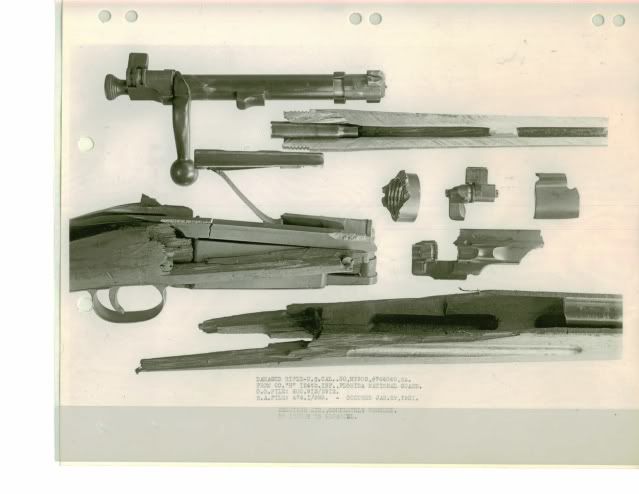 Yes Virginia, the laws of physics did not end in 1929. This is the rifle from the link I posted. I can’t find the text to the Gunbroker article, but the seller stated this rifle was kept in his store as a reminder of what will happen to single heat treat rifles. The man who shot this thing spent days, if not weeks in the hospital. Hatcher never heard of this one either. The auction winner took the thing apart and showed the pictures to all the curious little boys and girls. Hard to fathom why anyone would want to put their head behind such things, but people suicide for all sorts of stupid reasons. Do it on video and maybe you will win a Darwin award. 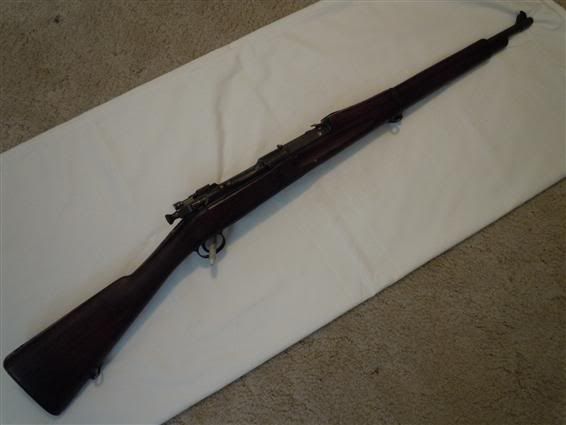 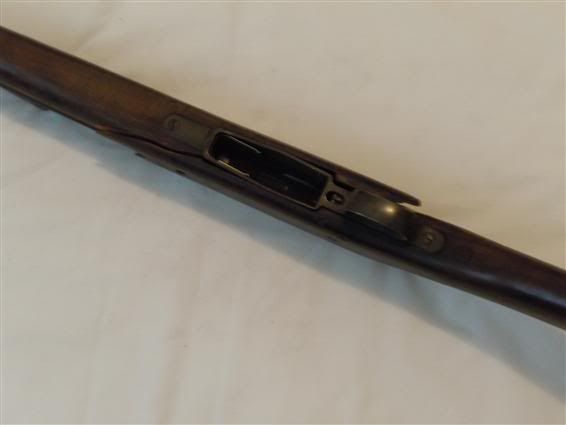 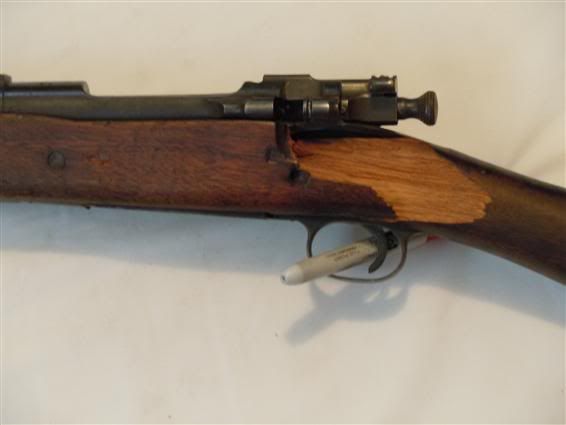 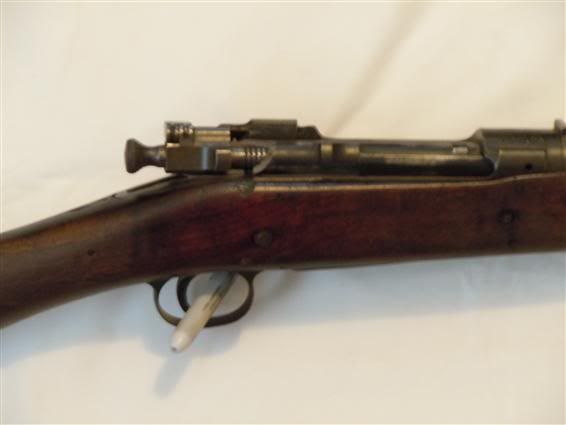 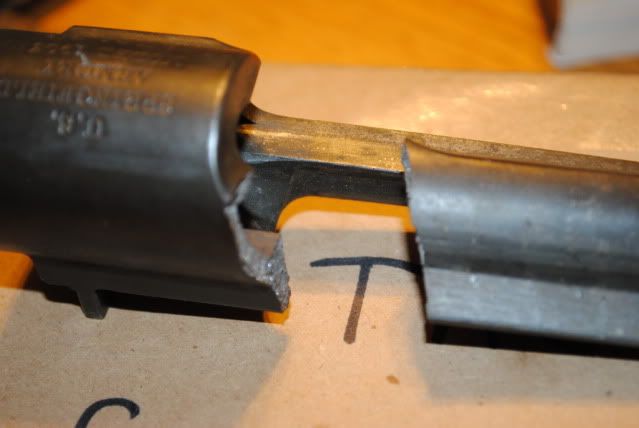
__________________
If I'm not shooting, I'm reloading. Last edited by Slamfire; February 17, 2011 at 10:33 PM. |
||
|
|
|
|
#22 |
|
Senior Member
Join Date: May 27, 2007
Posts: 5,261
|
More pictures
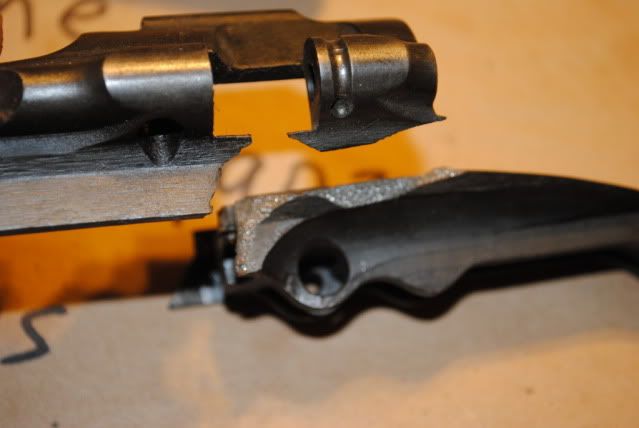 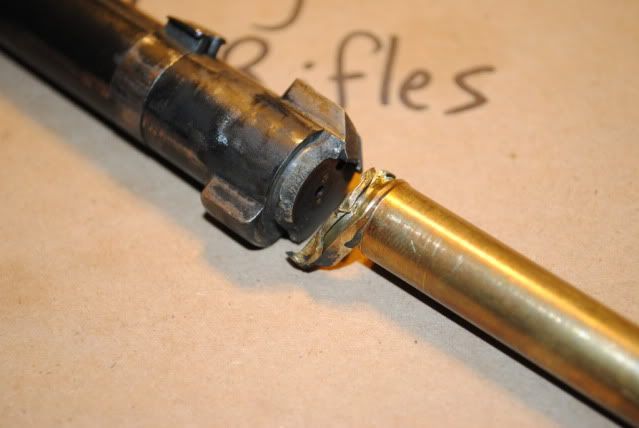  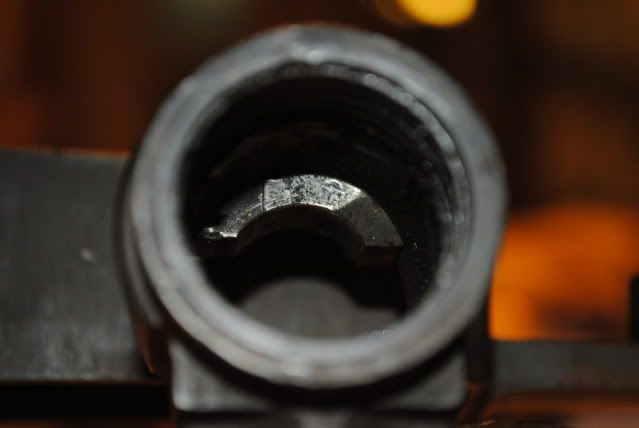
__________________
If I'm not shooting, I'm reloading. Last edited by Slamfire; February 17, 2011 at 10:25 PM. |
|
|
|
|
#23 |
|
Senior Member
Join Date: May 25, 1999
Location: Too close to Houston
Posts: 4,196
|
I'm not saying this is safe, just throwing the idea out for review...
Are low-number '03's safe to shoot using .32acp in chamber adapters or cast pistol bullets over light charges of Titegroup (or other apprpriate pistol/shotgun powder)? Maybe grandad's '03 can still make a little noise and provide enjoyment without so much risk to life and limb.
__________________
Proud member of the NRA and Texas State Rifle Association. Registered and active voter. |
|
|
|
|
#24 |
|
Senior Member
Join Date: January 21, 2000
Posts: 1,357
|
I had one for years and shot it with reduced loads all the time. It was old enough to have been a 30-03 to start with and had a prety worn 1918 springfield barrel on it. I hate to think of how many 1000s of rounds that had been shot out of that action.
|
|
|
|
|
#25 |
|
Staff
Join Date: March 11, 2006
Location: Upper US
Posts: 28,835
|
The problem is similar to Damascus barrel shotguns being shot with smokeless powder, in that it's not guaranteed to blow up the next time it is shot, it might go thousands of rounds with no trouble. OR it might blow up the next time you pull the trigger, AND there is no way to tell if, or when it will!
You can bet the odds, and say that since it hasn't gone by now, it isn't likely to go,, and even hedge this with light loads, BUT, it is still a gamble. That's why we say, for safety's sake, hang it on the wall, and honor the memory that way, rather than by shooting it.
__________________
All else being equal (and it almost never is) bigger bullets tend to work better. |
|
|
 |
|
|